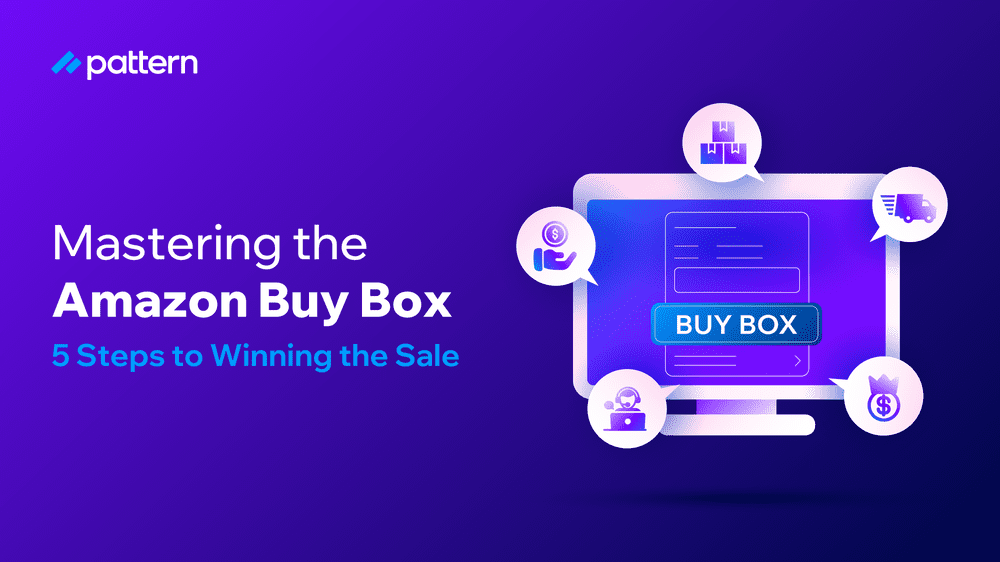Amazon is ending FBA prep services in 2026: What sellers need to know
Learn what Amazon’s FBA prep change means for your business and how Pattern can help.

Editor’s note: This article is written by Rob Hahn, Chief Operations Officer at Pattern. Rob has over a decade of executive experience in operations, robotics, and warehousing. He previously served as COO at Whitebox, building a global fulfillment network, and held senior roles at Amazon, where he helped launch automated fulfillment centers and integrate robotics into logistics.
Change is happening at Amazon faster than ever. Starting January 1, 2026, Amazon will stop offering prep and item labeling services for FBA shipments in the U.S.
This news follows a series of big operational shifts that have changed how inventory enters and moves through Amazon’s network.
For millions of FBA sellers, “What do I do next?” is suddenly a front and center question.
In this blog, we’ll break down why Amazon is making this move, the impacts on your operations, and how forward-thinking brands can stay ahead.
Amazon’s top 3 changes impacting sellers
If you feel the ground shifting under your feet as an Amazon seller, you’re not alone. Over the last year, Amazon has initiated foundational changes to both inbound supply chain processes and seller experience.
Let’s briefly recap three critical changes:
1. Placement and inventory movement overhauls
Amazon is prioritizing placing inventory closer to customers for faster delivery and lower costs. While this benefits Amazon, consumers, and can drive increased sales for sellers, it also creates more logistical complexity and expense for sellers.
If sellers ship to just one Amazon warehouse, they are charged extra for Amazon to split and distribute inventory to multiple fulfillment centers.
Sellers must either pay these fees or manage shipping to multiple centers themselves, both of which add complexity and cost for their logistics teams.
2. Cross-dock rollout
Amazon’s race to build a two-tiered cross-dock network during 2023-2024 was bumpy at best. The new two-tiered system, which includes both national and regional cross-docks, often requires inventory to be routed first to a national cross-dock and then to a regional one.
This extra stop at the nationals cross-dock increases lead times and adds complexity to the process.
Even though it’s been a tough adjustment, sending inventory to regional hubs for faster delivery is now a permanent part of how Amazon operates.
3. Amazon prep services are ending
The latest and arguably most disruptive change for some sellers: as of January 1, 2026, Amazon will no longer offer FBA prep or labeling services.
This is a fundamental operational pivot affecting millions of marketplace sellers.
Why is Amazon ending prep services? (And why now?)
When FBA launched over a decade ago, Amazon’s requirements for bagging, labeling, and prepping items for fulfillment were unique in the retail space—demanding item-level prep such as bagging, bubble wrap, and unique item labels not seen with other major retailers.
These differences from standard retail proved to be very difficult for brands to navigate.
There wasn’t an existing network of service providers to support them. Amazon stepped up, building in-house solutions to help sellers get compliant and succeed.
But the marketplace ecosystem has changed dramatically. There’s now a thriving ecosystem of third-party logistics companies, and many brands have internal teams or partners dedicated to FBA compliance and prep.
With in-network prep outgrown, Amazon’s new focus is warehouse efficiency at scale. They want to use every square foot for what matters most: fast-moving inventory and rapid fulfillment.
By removing prep and labeling, Amazon gains more flexibility and capacity for inventory processing.
What this means for sellers
For sellers, the stakes have never been higher. With Amazon removing prep services, you are now fully responsible for FBA compliance.
This means handling everything from bagging and bubble-wrapping to barcode labeling and carton prep. The operational and compliance burden increases, and there is less room for error.
Here’s what you need to consider:
- Compliance risk increases: Any lapse in prep puts inventory at risk for rejection, delays, or added fees.
- Higher complexity: Will you bring prep in-house, or find the right external partner? How will you keep up with requirements as Amazon continues to evolve?
- Need for speed: Getting inventory prepped and into Amazon’s network quickly continues to be a major driver of sales velocity and Prime eligibility.
- Cost management: Efficiency and scale in prep processes directly impact profitability in an increasingly competitive ecommerce landscape.
What should sellers do next?
This change may seem daunting, but it’s also an opportunity. The brands that move fastest and put best-in-class processes in place now will be best positioned for success into 2026 and beyond.
Here’s your action plan:
1. Audit your current prep & labeling processes
- Are you utilizing Amazon’s prep to reach compliance?
- Who handles labeling and prep today? Is it your team, a 3P, or a hybrid?
- Do you have the technology, personnel, and expertise in place to meet Amazon's standards on your own?
2. Evaluate prep partners and solutions
- Research qualified 3P partners with deep FBA prep expertise.
- Key evaluation criteria:
- Proven track record with Amazon and marketplaces
- Technology for efficiency & error reduction
- Transparent pricing and SLAs
- Geographic reach and speed to Amazon FCs
3. Build a transition timeline
- Amazon’s cutoff is January 1, 2026; success means being ready well before then.
- Pilot new prep partners or in-house processes during 2025 to work out kinks before the deadline.
- Review and refine your inbound logistics strategy.
4. Automate and integrate
- Explore warehouse management systems (WMS), labeling automation, and supply chain visibility platforms that enhance speed and reduce errors.
- Demand tech-driven solutions from your partners.
5. Communicate and stay proactive
- Ensure your internal teams and external partners are aligned and prepared.
- Stay engaged with Amazon’s updates and requirements, as more changes may come.
How Pattern can help
At Pattern, we’ve spent 12+ years building the fastest, most reliable supply chain into marketplaces in the world.
We offer brands a flexible, end-to-end prep, labeling, and inbound logistics solution designed specifically for Amazon.
Our services include:
- Receiving and inventory intake
- Item and carton-level labeling & compliance
- Comprehensive product prep and packing
- Inbound transportation direct to Amazon FCs
What sets Pattern apart?
- Proprietary warehouse technology that automates and tracks every step for maximum accuracy and speed
- Industry-leading experience navigating Amazon’s evolving standards
- Fastest dock-to-dock transit times, getting your product available for sale faster and reducing lost sales opportunities
- Transparent, engineered cost savings throughout your supply chain
We bridge the compliance and operational gap so your business can focus on growth, rather than chasing Amazon’s next change.
Take charge to stay ahead
Disruption always brings opportunity. Sellers who take proactive steps now to adapt to Amazon’s prep service changes will be best placed to thrive in 2026 and beyond.
Assess your position, select the right partners, invest in the right technology, and put your new processes in place well ahead of the deadline.
Pattern’s team is here to help brands navigate what’s next with confidence and speed. If you’d like to learn more about Pattern Marketplace Prep or want an expert assessment of your current supply chain readiness, contact us today.






.jpg)